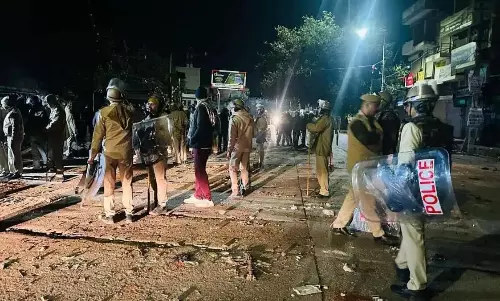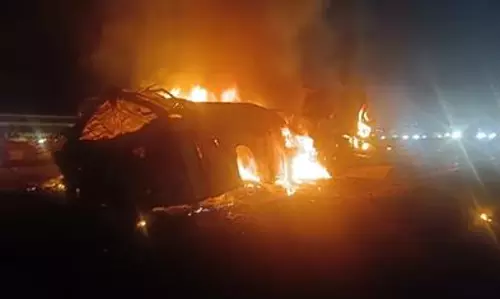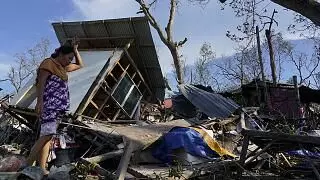
Super Typhoon Rai kills over 200 in Philippines
text_fieldsA resident salvages parts of her home damaged due to Typhoon Rai in Talisay, Cebu province, central Philippines (Image Credit: Jay Labra/AP)
208 people have died so far and 52 missing after the Philippines was ravaged by Typhoon Rai, according to government and police tallies, with widespread devestation and destruction harking back to Super Typhoon Haiyan that struck the country in 2013.
More than 300,000 people fled their homes and beachfront resorts as Rai slammed into the country on Thursday as a super typhoon. The Philippine Red Cross has reported "complete carnage" in coastal areas. "Homes, hospitals, school and community buildings have been ripped to shreds," Red Cross Chairman Richard Gordon said earlier.
Super Typhoon Rai - with winds of about 195km/h (120mph) - sent some 300,000 people running for safety when it hit the country's south-eastern island. Thousands of military and police personnel deployed with supplies and equipment to help trapped people and also clear roads and debris. Parts of the Philippines still have no power.
Meanwhile, Philippine President Rodrigo Duterte has conducted an aerial inspection of the areas ravaged by the storm. Videos posted on social media by his aides show extensive damage to Siargao, Dinagat and Mindanao islands. The governor of the Dinagat islands, Arlene Bag-ao, said on Facebook that the region had been "levelled to the ground" by the typhoon.
The Philippines is one of the most vulnerable countries in the world with respects to climate change, and scientists have already warned the population that typhoons and storms would become more powerful due to anthropogenic climate change driven by global warming. Typhoon Rai itself came unusually late, with most storms forming during the July-October season.

















